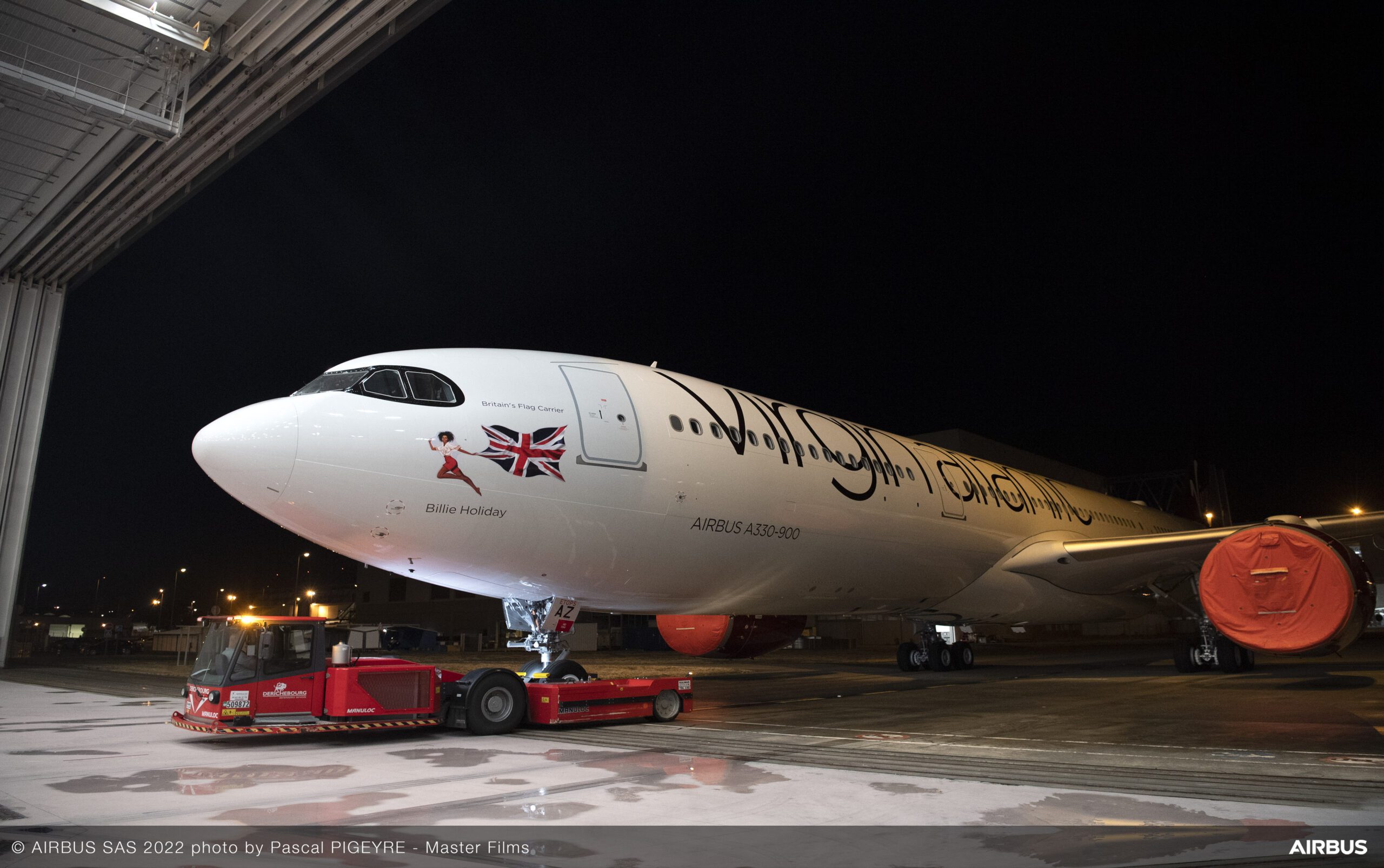
A330 900 Virgin Atlantic Airways MSN2018 roll out scaled
Macroeconomic uncertainties and headwinds are to blame as to why Virgin Atlantic expects to return to profitability not this year but only in 2024. The economic situation in its home market in the UK will be worse than expected, notwithstanding that demand for air travel continues to recover strongly, the airline said on May 10. Virgin Atlantic’s return to profitability has to wait for another year.
Slightly later than most airlines, Virgin Atlantic reported its FY22 results only today. The underlying EBITDA was £310 million compared to £-161 million in the very difficult 2021. The underlying loss before tax and exceptional items was £-206 million versus £-597 million the year before. The operating loss was £-72.7 million compared to £-280.6 million. The statutory loss was £-341.7 million versus £-484.6 million.
Total revenues were £2.854 billion, almost identical to those in 2019 and up from £928 million in 2021. Passenger unit revenues (PRASK) increased 23 percent over 2019 to £5.26 pence. For six months of the year, unit revenues were at record levels, with passenger yields at double-digit numbers. Load factors were back to pre-pandemic levels.
Revenues include £377 million from Virgin Atlantic Cargo, which despite the cooling down of the cargo market and sixteen tonnes less than the 201 in 2021 still exceeded expectations and were 75 percent higher than in 2019. Virgin Atlantic kept a focus on strict cost reductions, which helped it to reduce non-fuel costs by £173 million to £1.5 billion and realize the £300 million in annual savings from better fleet utilization. The carrier ended 2022 with £399 million in liquidity and net debt of £3.0 billion, up from £2.3 billion year on year.
Year of delivery
After a year of recovery and ramp-up in 2022, this year should be the year of delivery and 2024 the year of a return to profitability, says Virgin Atlantic. “In 2023, underlying EBITDA is expected to increase to a record level for Virgin Atlantic. Despite this, the combined effects of a weak pound, persistent high inflation, fuel prices, and rising interest rates mean a return to profitability is now expected in 2024,” the airline says in its press statement.
This year marks is the second of Virgin’s four-year plan back to profitability, which is backed by its shareholders Virgin Group (51 percent) and Delta Air Lines (49 percent). Chief Financial Officer Oli Byers thinks his airline is on the right track: “Our 2022 financial results reflect the first year of recovery following the immense challenges faced by our industry due to the Covid-19 pandemic. Our financial and operational performance demonstrates that our plan is working.”
Benefits of joining SkyTeam
The focus will remain on the North Atlantic network, which is where Virgin Atlantic earns most of its money. Joining SkyTeam in March as the UK’s first airline to join this alliance should generate new traffic to and from its London Heathrow and Manchester hubs.
With 38 aircraft, Virgin Atlantic operated with six fewer aircraft in 2022 than in 2019. It currently operates a fleet of forty aircraft, including seventeen Boeing 787-9s and nine Airbus A350-1000s. Last October, it welcomed the first A330-900 with the new premium cabins and currently operates four of them. Another twelve leased A330-900s will join the airline through 2027.
Views: 7



